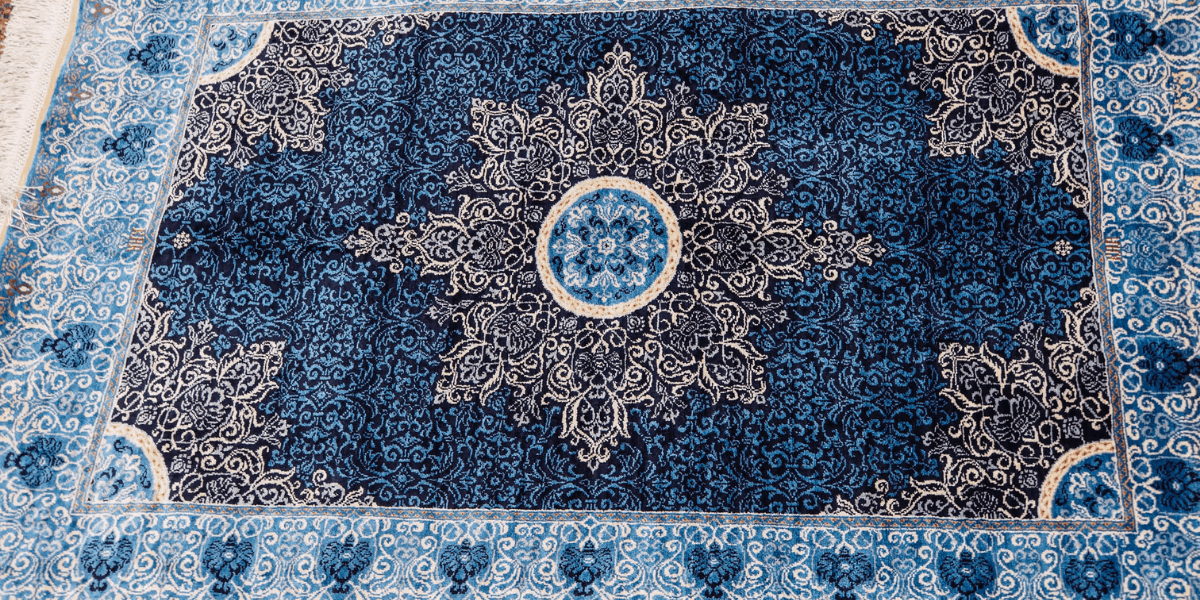WHAT IS A SILK CARPET?

Carpets, which are an integral part of home decoration, are offered for sale in different quality and price ranges according to the material used and production technique. One of these series is luxury carpets. Of course, when it comes to luxury carpets, silk carpets come to mind first. Silk carpets, which suit all different spaces with their rich designs and create a special combination with all other items, bring the chance of use for many years with their quality material structure. So, what is a silk carpet? What should be considered when using a silk carpet?
What is Silk Carpet Weaving?
For centuries, carpets have been designed as a valuable piece of decoration for homes. Silk carpets were first found in the middle of the Anatolian region, the oldest of which dates back to BC. It originated in Çatalhöyük around 7000 BC.
Between the 12th and 19th centuries, village women turned it into a way of expressing themselves by weaving carpets for their private use. They reflected their sadness and joy with their choice of colors, patterns and motifs. They depicted the daily life of the period with local motifs brought to life with their creativity, using women working with their hands and high-quality natural materials such as wool and silk. This centuries-old experience passed down through generations is what adds great value to a handmade carpet.
What are the Differences Between Silk Carpets and Wool Carpets?
Wool and silk are the most common materials used in carpets because of their beautiful appearance, durability and texture. However, there are quite distinct differences between the two. These can be listed as;
-Cost
-Durability
-Ease of maintenance
-Best usage
Carpets made of pure silk are usually the most expensive, as silk is much more valuable and expensive. Wool is a much more common and easy-to-use material. Wool carpets tend to be much more matte in appearance, while silk will have a slight shine. Also, wool carpet is typically very soft and less distinct when touched, while silk has thinner yarns that give it a recognizable feel.
When it comes to durability, wool carpets are actually more durable. They have stronger and denser piles, and the natural features of wool make them incredibly resistant to stains and damages, even when you place them indoors with heavy traffic. They are much easier to clean as you can gently sweep them fairly regularly without the risk of damages. Silk carpets are durable due to their quality yarns, but they can be easily broken, damaged or stained. If the carpet is placed in a high-traffic area, it will lose the shine we mentioned earlier. Therefore, it is not for a busier room, hall or staircase.
There are distinct differences between these two materials in how they look when they are turn into yarn and used in carpets. You will often hear people say that wool carpets blend into the background a little more than silk rugs. The reason for this is the soft nature of natural wool and its more tonal colors. However, you can apart them from each other by the type of carpet, its knots and feel. In silk carpets, you can find some blended materials that give you more vibrant hues and a unique look.
How is Silk Carpet Weaved?
After the fence and rug knitting is completed, the processes such as making the warp forming the skeleton of the silk carpet on the carpet loom and binding the knitting power tree are started. It has been determined that the knotting of silk carpets is done both in a way to cover the warp wires and with a Turkish knot starting from the left. However, a form of Iranian knot called "single knot" is also encountered in very few woven silk carpets.
The knotting process is completed when the knitting strength of the wooden lath placed between the cross formed by the warp wires is at the top and close to the knitting strength. Then a cotton thread is passed between the warp threads and beaten with a special tool made of iron. This is done so that the knots are well placed on the warp wires. After knitting, a thick silk weft thread is tied to one end of the cotton trimming thread and the cotton thread is pulled back. Thus, the silk weft thread, which replaces the cotton thread between the warp threads, breaks strongly this time.
Then the lath is taken and this time the thin silk weft thread is passed in the same direction as the thick weft and it is slightly broken. In order for the mouthpiece to fit properly, the cotton straightening thread is passed over the mouthpiece again and this time it breaks strongly together. Before the second knot, the knot ends are cut with special silk carpet scissors and the woven part is straightened.
How to Clean Silk Carpets?
To clean your silk carpet, all you have to do is shake it outside and then sweep it gently with a broom. You can also use a vacuum with a brushless section head. To get rid of stains on your silk carpet, first absorb the spilled liquid with a clean white cloth. Then wipe the stain with a clean cloth and baking soda.